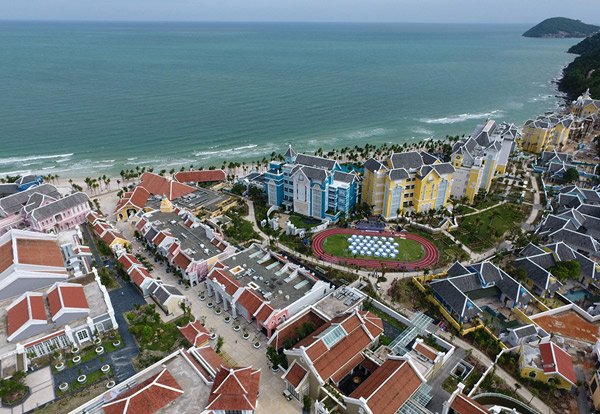[ad_1]

The three SEZs are on the horizon
In October 2012, the Quang Ninh provincial authorities got the nod to carry out a study on the Van Don special administrative unit. In early 2013, the province organized investment promotion events to attract big investors, believing they would ensure the success of SEZs in the future.
At that time, an investor flew to Hanoi from the US. Nguyen Van Thanh, deputy chair of Quang Ninh, told the story of how the investor was received. After taking a 3-round field work on a helicopter, the investor raised four questions.
First, he wanted to know how many SEZs Vietnam planned to build and where the SEZs would be. Second, when will Vietnam have laws on SEZs?
|
In October 2012, the Quang Ninh provincial authorities got the nod to carry out a study on the Van Don special administrative unit. In early 2013, the province organized investment promotion events to attract big investors, believing they would ensure the success of SEZs in the future. |
Third, he wanted to know if the local authorities were given enough power to settle the problems related to investors. Fourth, he wanted to know exactly when the airport and highway in Quang Ninh would be built.
Thuc said the provincial authorities could not give answers to the questions. Therefore, the investor could not make a final decision.
After five years, there are now answers. Three SEZs are being drawn up, while the legal framework for SEZs is scheduled to be ratified at the upcoming National Assembly’s fifth session. And the transport infrastructure connecting Van Don and developed economic zones is ready.
The highway that links Van Don and Hai Phong will be connected with the Hanoi-Hai Phong Highway. This means that from early July, it will take people less than three hours to reach Van Don, instead of five hours.
What do SEZs need?
Hoang The Lien, former Deputy Minister of Justice, commented that the draft law on SEZs offers such big investment incentives that are only just inferior to ‘tax havens’.
However, he said that making profits is not the only goal of investors. They want to be sure that their capital and assets are safe.
Agreeing with Lien, Nguyen Thanh Hoa from KPMG said tax incentives make up 30-40 percent of investors’ decisions. The two other important factors for investors to consider are transparency and stable policy, and good infrastructure conditions.
Some SEZs around the world have failed because of unclear purposes, limitations in policy liberalization, bad design, or mismanagement.
Meanwhile, Vo Tri Thanh, a renowned expert on international integration, commented that the three most important factors that determine the success of SEZs remain unclear in the draft law. The factors include resource relocation, institutional apparatus, and preferential incentives.
RELATED NEWS
3 SEZs to cost Vietnam whopping $70 billion
Red carpet, tax incentives not enough for SEZ: experts
Kim Chi
[ad_2]
Source link
